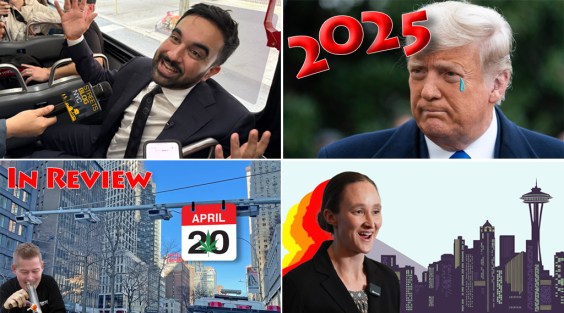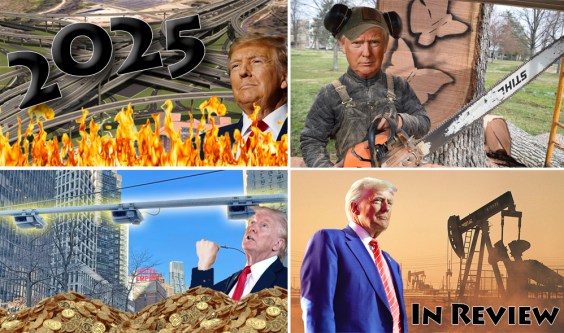Most Americans support traffic safety cameras, especially when framed in the context of racial justice, according to a new study.
The study, “Can A Racial Justice Frame Help Overcome Opposition to Automated Traffic Enforcement?” confirmed that people are more inclined to support cameras in their communities when they are reminded of the dangers that traffic stops by police impose on people of color — encounters that can lead to police brutality and even death, like the 2019 fatal shooting of Allan Feliz, whom cops killed during a so-called routine traffic stop in the Bronx.
Researchers hope the results can increase support nationwide for swapping out cops for cameras, effective tools at keeping reckless drivers off the road and reducing fatal and injury-causing crashes.
“We find that an interpersonal racial justice frame increases support for traffic safety cameras, suggesting that it could be a useful tool to help increase public support for cameras,” the study authors wrote in the study, which was published this week in published in Transportation Research Interdisciplinary Perspectives.
The survey that informed the study asked 1,500 participants a series of 32 questions, including about their trust in police, and whether they’re aware of racial biases in policing. If there’s any doubt, a plethora of studies prove its existence. Cops across the country are 40 percent more likely to stop a Black driver than a White driver, studies show, and a report from The Legal Aid Society last month found that 88 percent of arrests for driving with a suspended license in New York City last year were people of color. And another 2017 University of Chicago study found that cities with larger Black populations issued more tickets and more revenue collection per capita than those with fewer Black people.
But the crux of the survey was its framing around automated enforcement — like speed and red-light cameras, which slap fines on drivers who go more than 10 miles per hour over the speed limit or blow past red lights.
A control group, which consisted of roughly half the participants that were randomly selected, was asked the question in a way that merely introduced traffic cameras without the context of racial bias.
It reads:
Some people suggest using traffic safety cameras on neighborhood and arterial streets. Cameras would be placed at dangerous intersections and along roadways with many crashes. Drivers who drive much faster than the speed limit or who run a red light would get a ticket by mail. The cameras would run 24 hours a day.
The so-called treatment group got this alternative message that included such context:
Nearly all drivers break minor traffic laws, so police have some choice in who they pull over. Some officers are affected by racial bias. When it is dark — and officers cannot tell the race of the driver — drivers of different races are equally likely to be pulled over. But during the day, when officers can tell the race of the driver, Black and Hispanic drivers are pulled over more often. Traffic stops also occasionally lead to violent conflicts and even death. To address this problem, some people suggest using traffic safety cameras on neighborhood and arterial streets. Cameras would be placed at dangerous intersections and along roadways with many crashes. Drivers who drive much faster than the speed limit or who run a red light would get a ticket by mail. The cameras would run 24 hours a day. Traffic cameras would reduce racial bias in traffic stops. White, Black, and Hispanic drivers would be equally likely to get a ticket. Because the cameras are automatic, they would also reduce violent conflicts with police.
All of the respondents were then asked whether they would or would not support cameras. Predictably, support among the group presented with the racial justice framing was far greater — 71 percent compared to 57 percent in the control group.
Also as expected, support varied across racial and gender lines and political ideology. Black and Latino respondents were more likely to support cameras compared to White respondents, according to the study, and those who identified as liberal were more than twice as likely to support traffic cameras as conservatives.
The study follows a recent investigation into supposedly “race-neutral” enforcement in Chicago, which found that 38 percent of the speed camera tickets were mailed to residents of majority-Black ZIP codes, despite the fact that those ZIP codes account for just 27 percent of Chicago’s population. The race of the recipient of the ticket is unknown. The ProPublica report also found that the cameras themselves were not disproportionately concentrated in Black neighborhoods. Researchers in Chicago, Dr. Stacey Sutton and Dr. Nebiyou Tilahoun, offered a slate of recommendations for making the camera enforcement program there more effective, Streetsblog Chicago reported, including things like analyzing red-light cameras proximal to freeways, scaling fines and fees by ability to pay, and reassessing camera locations that are not improving safety outcomes.
That investigation also fueled Streetsblog NYC’s own probe into New York’s vast camera system, which some people believe disproportionately targets communities of color. But the Streetsblog story found that the speed cameras themselves are evenly distributed across the city, and are not disproportionately concentrated in low-income neighborhoods or communities of color.
Still, more tickets are often issued in some communities of color because of decades of systemic racism in infrastructure planning that led to the wide, speedway-like arterials that cut through such neighborhoods, and which have not been redesigned for safety as they have been in White neighborhoods. The result is not only many speeding tickets written in those communities, for which Black and Brown folks bear the brunt of such financial burden, but also that residents of those neighborhoods are disproportionately the victims of road violence.
As a result, many activists and pols are weary about automated ticket enforcement — New York City Council Speaker Adrienne Adams earlier this year seemed to agree when a driver said it is a “well acknowledged” theory that speed cameras are merely a way to nickel and dime New Yorkers, often on the backs of communities of color.






